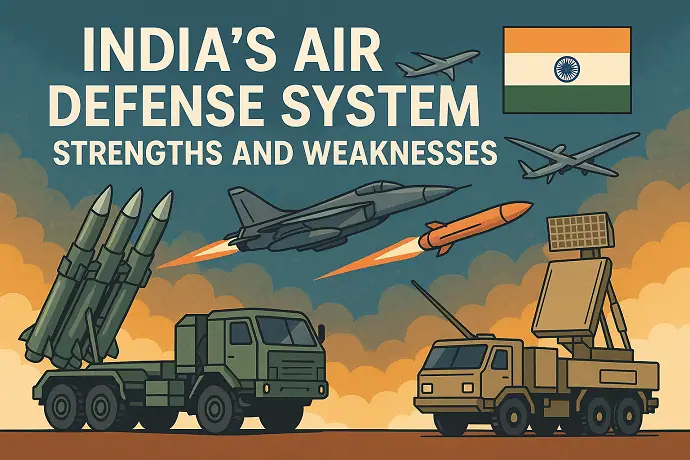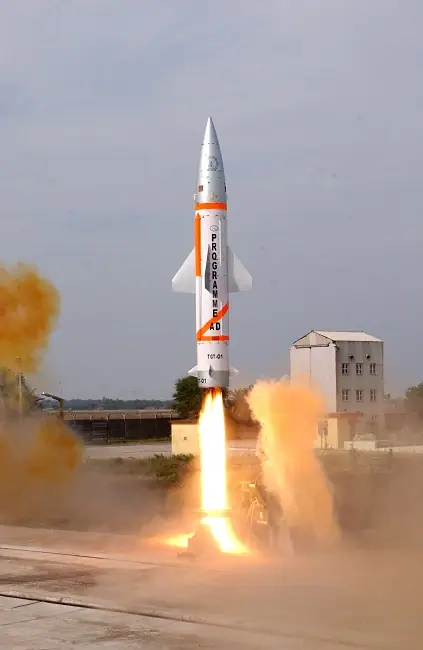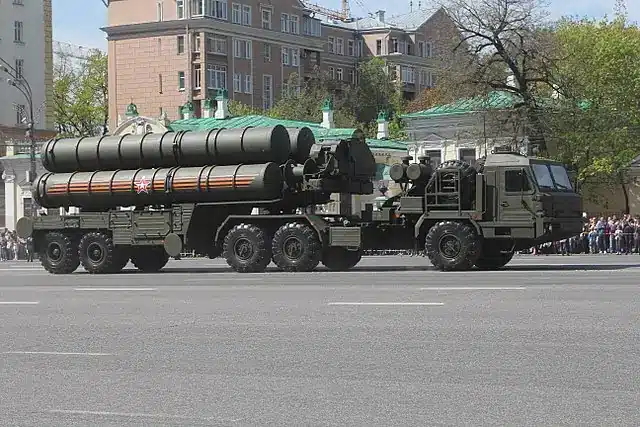India’s Air Defense System is a cornerstone of its national security strategy, designed to safeguard its vast airspace against a spectrum of aerial threats, including fighter jets, ballistic missiles, cruise missiles, and unmanned aerial vehicles (UAVs). Given its geopolitical location, with adversarial neighbors like Pakistan and China, and ongoing regional tensions, a robust air defense is essential. As of May 2025, the system integrates both indigenous innovations and advanced systems acquired through strategic partnerships, forming a multi-layered defense architecture. This note provides a comprehensive analysis of its strengths and weaknesses, drawing on recent developments and operational details.
Contents
hide
Overview of India’s Air Defense System
India’s air defense is structured as a multi-layered system, categorized into four layers for effective threat interception:

- Long-Range Interception: The Indian Ballistic Missile Defence Programme, featuring systems like the Prithvi Air Defense (PAD) and Advanced Air Defense (AAD), is designed to intercept ballistic missiles with ranges of 300-2000 km at altitudes up to 80 km. PAD operates at exo-atmospheric levels (about 80 km altitude, speed Mach 5), while AAD handles lower altitudes (up to 30 km, speed Mach 4.5), capable of intercepting missiles up to 5,000 km away.

- Intermediate Interception: The S-400 Triumf, acquired from Russia, is one of the best air defense systems in the world. . With a range of up to 400 km and the ability to engage multiple targets simultaneously, it enhances defense against high-altitude threats, including aircraft and ballistic missiles. Deliveries of five regiments began in 2021, with three operational by 2025.

- Short-Range Interception: Indigenous systems like Akash, with a range of up to 45 km and an altitude ceiling of 18,000 m, can track 64 targets and engage 12 simultaneously. The Indian Air Force (IAF) operates 8 squadrons, with 2 Army regiments, and 2 more ordered. The Barak 8, developed jointly with Israel, offers a range of 0.5-100 km and an altitude of 16 km, deployed across all three services, including in strategic areas like Ladakh. The Quick Reaction Surface-to-Air Missile (QRSAM), with a range of 3-30 km and speed of Mach 4.7, is also deployed in Ladakh.
- Very Short-Range Interception: India deploys some the most powerful MANPADS in the world. Man-Portable Air-Defense Systems (MANPADS) such as the 9K38 Igla-S (range 6 km, altitude 3.5 km, speed Mach 1.9, cost $60,000) and FIM-92 Stinger (range 4,800 m, speed Mach 2.2, cost $80,000, with limited use) provide point defense. Anti-aircraft guns like the ZSU-23-4 Shilka (lightly armored, 4×23 mm cannons) complement these systems.
This layered approach ensures comprehensive coverage, with overlapping systems providing redundancy and resilience.
Detailed Strengths of India’s Air Defense System
The strengths of India’s Air Defense System are multifaceted, reflecting both technological advancements and strategic foresight:
- Multi-Layered Defense Architecture: The four-layer system ensures threats are intercepted at various ranges, minimizing the risk of breaches. For instance, the S-400’s capability to engage targets at 400 km complements the shorter-range Akash and QRSAM, creating a robust shield.
- Advanced Systems: The S-400 Triumf, with its multi-AESA radar and ability to fire three types of missiles, is a game-changer, capable of intercepting all types of aerial targets, including UAVs and cruise missiles, at altitudes up to 30 km. The Barak 8, deployed in Ladakh, enhances defense against medium- to long-range threats, particularly for naval platforms.
- Indigenous Development and Self-Reliance: India’s push for self-reliance through the “Make in India” initiative is evident in systems like Akash, with 8 IAF squadrons and 2 Army regiments (2 more ordered), and the Ballistic Missile Defence Programme. The upcoming Akash-NG (Next Generation), with an extended range of 70-80 km, promises further improvements. Indigenous systems reduce dependency on foreign suppliers, lower costs, and enable customization to India’s unique operational needs.
- Strategic Partnerships: Collaborations with Russia for the S-400 and Israel for Barak 8 have enriched India’s air defense portfolio. These partnerships facilitate technology transfers, strengthening the domestic defense industry. For example, the S-400 deal, valued at over $5 billion, includes maintenance and training support, enhancing operational readiness.
- Robust Network and Command Systems: India’s air defense is supported by a complex network of radars, including indigenous systems like Arudhra and Ashwini, and imported ones like the Israeli Green Pine. The Integrated Air Command and Control System (IACCS) enables real-time coordination between sensors, SAM systems, and fighter aircraft, ensuring seamless operations.
Detailed Weaknesses of India’s Air Defense System
Despite its strengths, India’s Air Defense System faces several challenges that could impact its effectiveness:
- Aging Systems and Outdated Technology: Some components, such as the S-125 Pechora, first inducted in 1961, are over 60 years old and may lack modern capabilities against contemporary threats. Similarly, Soviet-era systems like the 9K33 Osa (range 15-18 km, speed Mach 3) and 2K12 Kub (range 24 km, speed Mach 2.8) are potentially outdated, with 25 squadrons of Pechora still forming the backbone of IAF air defense.
- Dependence on Foreign Technology: While indigenous development is progressing, India still relies heavily on foreign systems like the S-400 for high-end air defense. This dependence exposes India to geopolitical risks, such as U.S. sanctions under CAATSA (Countering America’s Adversaries Through Sanctions Act), which have complicated acquisitions. The high cost of systems like Stinger ($80,000 per unit) also limits deployment numbers.
- Gaps in Coverage and Deployment: Despite the layered approach, India’s vast borders and diverse terrain make it challenging to achieve complete coverage. Certain regions, particularly rural and border areas, may not be fully protected, with the S-400’s deployment still incomplete (only three of five regiments operational by 2025). Urban centers and strategic assets are prioritized, leaving potential vulnerabilities.
- Vulnerability to Emerging Threats: Modern warfare increasingly involves low-observable technologies, hypersonic missiles, and swarms of UAVs. Current systems, including the S-400, are less effective against hypersonic threats, which travel at speeds exceeding Mach 5. The 2020 Armenia-Azerbaijan conflict highlighted the devastating potential of drones, underscoring India’s need for specialized electronic warfare and laser-based systems, which are still in development.
- Integration Challenges: Integrating diverse systems from multiple countries (Russia, Israel, etc.) can lead to interoperability issues. Differences in technology, communication protocols, and operational doctrines may hinder seamless coordination, potentially affecting response times during complex, multi-vector threats.
- Budgetary and Logistical Constraints: Developing and maintaining such a sophisticated air defense system is capital-intensive. India’s defense budget, while substantial, is stretched across multiple priorities, including modernization of the IAF, Navy, and ground forces. Delays in production and deployment of indigenous systems like Akash-NG and QRSAM further exacerbate these issues, with budgetary constraints potentially slowing the pace of upgrades.
Comparative Context and Future Prospects of India’s Air Defense System
While not directly part of the user’s query, it’s worth noting that India’s air defense capabilities are often compared to those of Pakistan, with India’s layered, multi-tiered defenses contrasting against Pakistan’s more limited but evolving systems. A comparison of India and Pakistan’s Air Defense Systems shows that India has a leverage over Pakistan’s Air Defense capability.
Looking ahead, India is investing in next-generation technologies, such as directed-energy weapons and anti-hypersonic missile systems, to prepare for emerging threats. Projects like Project Kusha, a long-range mobile SAM system under development by DRDO, aim to intercept targets at ranges up to 350 km, including stealth fighters and ballistic missiles. Accelerating the deployment of S-400 units and expanding coverage of indigenous systems like QRSAM will be critical to plugging geographical gaps.
Conclusion
India’s Air Defense System is a formidable blend of indigenous innovation and global partnerships, capable of countering a wide range of aerial threats. Its multi-layered architecture, advanced radar network, and strategic acquisitions like the S-400 provide significant strengths. However, challenges such as aging systems, foreign dependency, and vulnerability to emerging threats highlight areas for improvement.
Summary of India’s Air Defense System — Strengths and Weaknesses
Aspect | Details |
|---|---|
Strengths | – Multi-layer air defense system with four layers: Long Range (Indian Ballistic Missile Defence Programme), Intermediate (S-400 Triumph, future induction), Short Range (Akash, S-125 Pechora, Spyder, etc.), Very Short Range (MANPADS, Anti-Aircraft Guns). – Indian Ballistic Missile Defence Programme includes PAD (range 300-2000 km, altitude 80 km, speed Mach 5) and AAD (range 150-200 km, altitude 30 km, speed Mach 4.5), intercepting missiles up to 5,000 km away. – Akash system: Targets up to 45 km, altitude 18,000 m, can track 64 targets, attack 12 simultaneously, 8 IAF squadrons, 2 Army regiments (2 more ordered). – Spyder: Short (20 km, Python-5) and Medium Range (50 km, Derby), 1 IAF squadron, 4 more ordered. – Barak 8: Range 0.5-100 km, altitude 16 km, used by all three services, deployed in Ladakh. – QRSAM: Range 3-30 km, altitude 30 m-6 km, speed Mach 4.7, deployed in Ladakh. – S-200: Range 300 km, altitude 40,000 m, speed Mach 4, augments lower altitude defenses (retired 2015, unconfirmed). – MANPADS: 9K38 Igla-S (range 6 km, altitude 3.5 km, speed Mach 1.9, cost $60,000) and FIM-92 Stinger (range 4,800 m, speed Mach 2.2, cost $80,000, limited use). |
Weaknesses | – IAF struggling to maintain squadron strength, increasing reliance on air defense systems. – S-125 Pechora is 60 years old (first inducted 1961), backbone of IAF air defense, 25 squadrons, may lack modern capabilities. – Some systems like 9K33 Osa (range 15-18 km, speed Mach 3) and 2K12 Kub (range 24 km, speed Mach 2.8) are Soviet-era, potentially outdated. – Limited numbers of advanced systems like Stinger (high cost, $80,000 per unit) and ZSU-23-4 Shilka (lightly armored, 4×23 mm cannons). – S-400 induction pending, not yet operational, critical for enhancing capabilities. |







